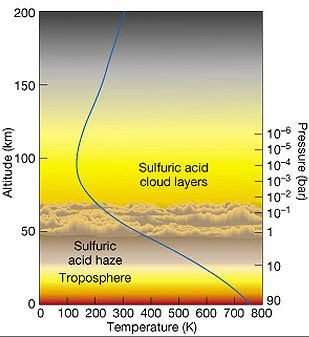CLIMATE WATCH - The Greenhouse Effect
What do scientists mean by the "Greenhouse Effect"?
When the Sun's energy arrives at the Earth, it travels through the air.
When the Sun's energy arrives at the Earth, it travels through the air.
Some is reflected back to space, but some hits the Earth and warms it.
The warm Earth gives off infrared radiation with various wavelengths.

Some of those waves can pass back out of the air to space, but some are absorbed by certain gases in the air.
If there are more of those gases, less heat escapes into space.

Concentrated 'greenhouse gases' on Venus have caused the surface temperature to rise to 735 Kelvin (462 degrees C; around 900 degrees F)
Carbon dioxide levels in the atmosphere have risen quickly since people began burning large quantities of fossil fuels.
Carbon dioxide levels in the atmosphere have risen quickly since people began burning large quantities of fossil fuels.
There was carbon dioxide in the air before that, at around 270 parts per million.
Without any carbon dioxide, the Earth would be very cold.
Without any carbon dioxide, the Earth would be very cold.
The temperature would be around -18 degrees C.
There have been times when most of the carbon dioxide was trapped in rocks.
The Earth cooled into a state called 'Snowball Earth'.

This is not new science. The first scientific paper hinting at what we now call the greenhouse effect was published in 1824. Yes, nearly 200 years ago.
An experiment showing CO2 was a key greenhouse gas was demonstrated at a scientific event by Mrs Eunice Foote in 1856.
Svante Arrhenius published the first calculation of global warming from human emissions of CO2 in 1897. He'd started off investigating how changes in CO2 could be connected to ice ages.
